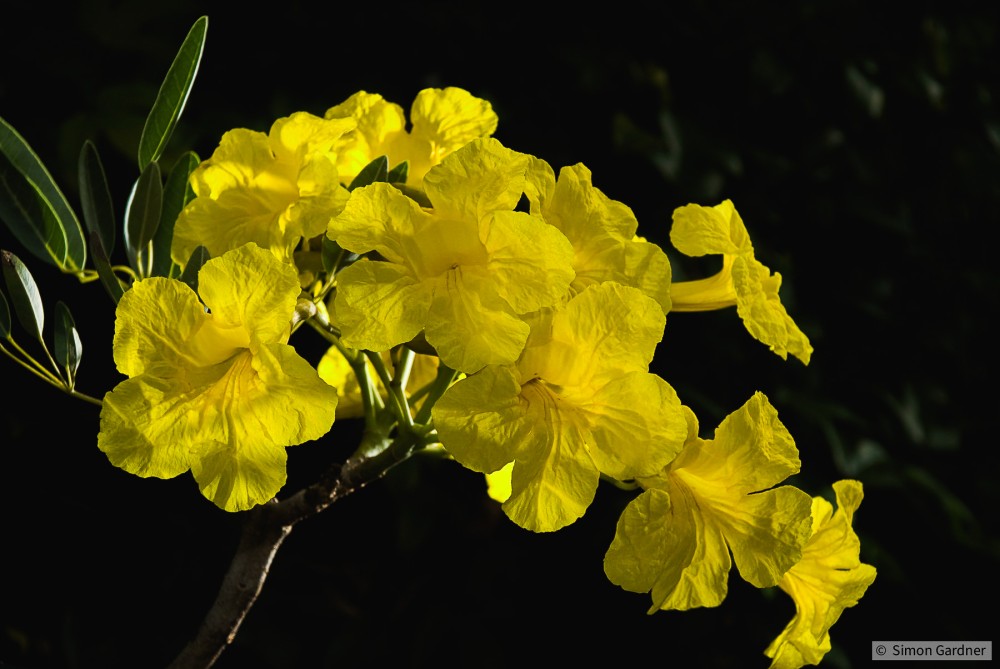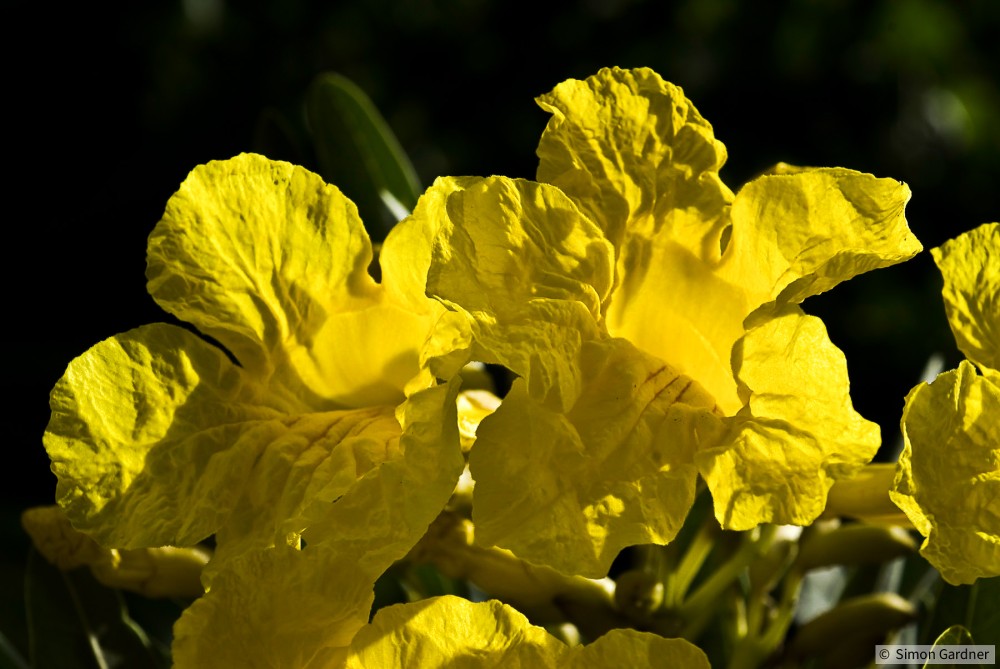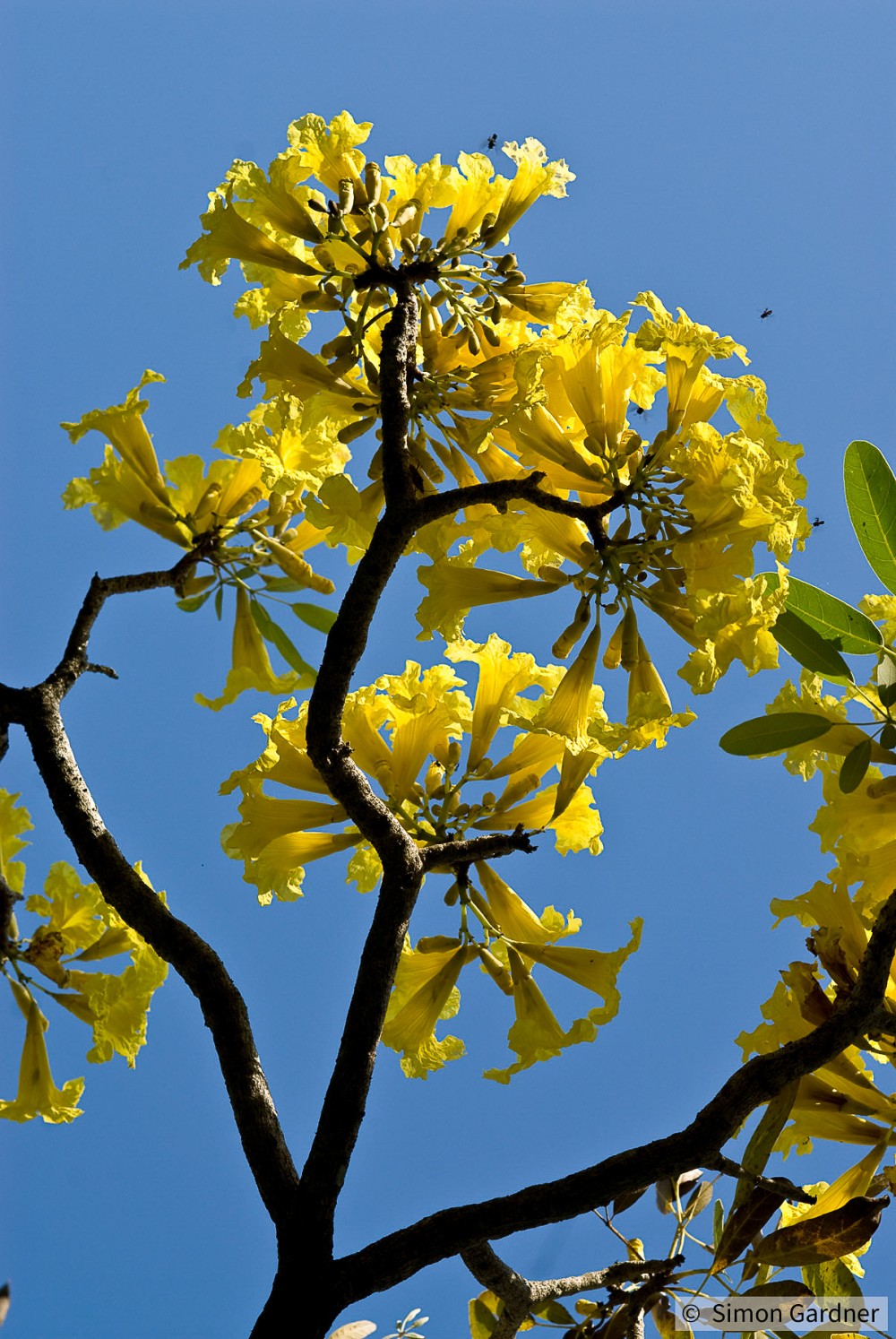No Data Found
Tabebuia aurea
Silver Trumpet Tree, Tree of Gold, Paraguayan Silver Trumpet Tree
![]() High Sensitivity
High Sensitivity
| Species Name | Tabebuia aurea |
|---|---|
| Common Name | Silver Trumpet Tree, Tree of Gold, Paraguayan Silver Trumpet Tree |
| Family | Bignoniaceae |
| Genus | Tabebuia |
| Taxonomic Synonyms/Past Names | |
| Taxonomic Notes |
Agree with the details?
Login to Vote Now
Species Information
- Small deciduous tree growing up to 8 m tall, crown bushy. Leaves opposite, palmately compound with 5-7 leaflets, each 6-18 cm long and covered with silvery scales on both surfaces. Flowers c. 6.5 cm in diameter, tubular, bright yellow in loose clusters. Fruits are capsules c. 10 cm long, slender, and flattened.
- Suriname, Brazil, eastern Bolivia, Peru, Paraguay, and northern Argentina
- In riparian areas and dry deciduous forests
- Data Deficient
No Data Found
No Data Found
No Data Found
No Data Found
No Data Found
No Data Found
No Data Found
No Data Found
No Data Found
No Data Found
No Data Found
No Data Found
No Data Found
No Data Found
No Data Found
No Data Found
No Data Found
No Data Found
- Fruits are slender capsules 10 cm long [1]
No Data Found
No Data Found
No Data Found
No Data Found
- The leaves have purgative properties [1]
No Data Found
No Data Found
No Data Found
No Data Found
No Data Found
No Data Found
No Data Found
No Data Found
No Data Found
No Data Found
No Data Found
No Data Found
No Data Found
No Data Found
No Data Found
No Data Found
No Data Found
No Data Found
No Data Found
No Data Found
No Data Found
No Data Found
No Data Found
No Data Found
No Data Found
No Data Found
No Data Found
No Data Found
No Data Found
No Data Found
No Data Found
No Data Found
No Data Found
No Data Found
- Native to South America. [1]
No Data Found
No Data Found
No Data Found
No Data Found
No Data Found
No Data Found
No Data Found
No Data Found
No Data Found
No Data Found
No Data Found
No Data Found
No Data Found
No Data Found
- It has weak branches. [1]
No Data Found
No Data Found
No Data Found
No Data Found
No Data Found
No Data Found
No Data Found
No Data Found
No Data Found
- Susceptible to heart rot disease. [1]
-
Insufficient Data
No Data Found
No Data Found
No Data Found
No Data Found
No Data Found
No Data Found
No Data Found
No Data Found
No Data Found
- Planted as an ornamental. Used for timber and to make products such as furniture and frames. [1]
Contributors: anonymous
Last Updated: 2023-03-15






No comments